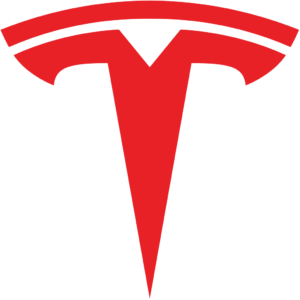Ford’s publishing breakthrough ….. Tesla’s push for parts count reduction ….. Corn growers bemoan sinking ethanol sales ….. Battery fires plague four EV manufacturers ….. Vermont taxpayers reap huge savings from Green Mountain Power’s energy storage grid ….. More wisdom from Sandy Munro
**** After decades, another hint that Ford might be creeping into the digital age. AutoBeat Daily reported October 13th that Ford has belatedly decided to publish its new F-150 owner’s manual digitally, making it available through the vehicle’s touch screen. Not able to fully cut the cord, Ford will still include what they call a “thin [owner’s] guide” in the vehicle’s glovebox.
However, the big news in this story is that Ford’s owner’s manual for the recent series F-150 is 625 pages long! Yikes! Ford seems to be competing with Tolstoy’s War and Peace! What’s wrong with this picture? Any vehicle that takes 625 pages to describe its operation, specifications, and simple maintenance procedures is way too complex. Similarly, any writer who cannot describe the same subjects for Ford with fewer words should eat their keyboard. Not only is this 625 page manual huge and heavy, taking up a considerable amount of room in the glovebox, but no owner will ever read it. Just completely and accurately indexing a vehicle owner’s manual that large is a huge and difficult and error prone task. As with all car manufacturers today, Ford’s lawyers have no doubt filled a significant portion of Ford’s owners’ manuals with “warnings” and legal disclaimers, similar to the beeping “nannies” that befoul our driving experiences in today’s vehicles.
Environmentalists will justifiably point to Ford’s previous waste of paper and trees for its manuals. Ford says its move will save 290 tons of paper a year, just on its F-150 vehicle that accounts for about 900,000 sales per year. Ford calculated that if stacked vertically the previous owners’ manuals would amount to a pile 3.4 miles high!
What if all autos came with digital owner’s manuals? Imagine the cost savings, and positive environmental impact. No trucks (and fuel) needed to carry trees to the paper mill, paper to the printer, and manuals from the printer to Ford’s factories. No inventory management necessary for Ford, no containers of manuals stacked by the production line taking up precious production floor room. Why are such simple improvements so hard? Why is progress so slow? Why is management so inept? Even Ford’s bean counters have to love this improvement.
**** Readers may remember my articles on parts count reduction that focused on Tesla’s change to a single aluminum high pressure die casting to replace some seventy nine separate parts needed to form the rear section of Tesla’s Model Y. Sandy Munro of Munro Associates has said in several YouTube videos that the real part count saving in the Model 3 “twin” to the Model Y single rear casting was more like a hundred plus parts.
This parts reduction was made possible by the purchase of the world’s largest high pressure die casting machine(s) from IDRA Group in Italy – – a “monster” machine I have previously discussed. Tesla’s Fremont plant now has two of these huge machines, one inside their plant building, and one outside because it is so large that it wouldn’t fit in Tesla’s plant building. At least one of these casting machines is reported to be near operational status very soon.
During Tesla’s Battery Day on September 22, 2020, Elon Musk revealed that Tesla now plans to perform the same parts count reduction for the front section of the Model Y. This improvement is likely to be introduced at the start of Model Y production in Tesla’s new Giga Berlin plant, around June of 2021. Tesla is installing eight of these huge high pressure die casting machines in its new German plant.
With the introduction of Tesla’s new 4680 battery initially for at least some of its models, Tesla has further plans to eliminate their “conventional” battery packs and design a new cell-to-pack structure (eliminating today’s “modules”) that will become an integral part of the vehicle’s chassis, thus saving weight, improving the vehicle’s torsional rigidity, and decreasing its polar moment of inertia. The total parts count savings from the front and rear castings and the structural battery enclosure is 370 parts!
Even further down the road look for Tesla to cast the upper body structure as one part that can be lowered on the diecast chassis that forms the skateboard-like “frame” of the vehicle.
It is hard to grasp the totality of the savings to Tesla from the reduction of 370 parts in its Model Y (and similar amounts of parts eventually from the Model 3, and other Tesla models). These savings ripple through the entire Tesla organization and production process. Consider these benefits as a start:
- Fewer suppliers, purchasing people, stock handlers, and inventory control staff will be needed by Tesla
- Tesla’s supply chain management risks will be significantly ameliorated
- Fewer stamping presses and dies, as well as material handling and welding robots will be needed on the production floor, significantly lowering capital expenditure and maintenance costs
- Inventory holding and production floor space, especially precious at Fremont, will be freed up
- Direct labor production headcount can be reduced and redeployed [not fired!]
- Painting and/or coating operations for the eliminated parts will also be eliminated saving more material, labor costs, and production time
- The production process will be more robust – subject to fewer production line stoppages for broken or malfunctioning machinery or robots
- A huge amount of vehicle production process time will be saved
- The overall quality of each Tesla vehicle will be improved due to stronger and more precision castings, vastly fewer material interfaces that need fastening, fewer opportunities for production line errors, and somewhat lower warranty costs
- Tesla’s replacement parts program will be greatly simplified
- Production costs for the Model Y will be substantially lower, in my judgement by at least 20% — allowing either increased margins, or lower prices to customers, or both
You can begin to understand why Elon Musk often says: “The best part is no part.”
**** A recent article in Green Car Reports discusses how corn farmers are concerned that the push for EVs in California (and everywhere else!) will sink ethanol sales. It sure will, as US methanol is made from corn, unlike the ethanol in Brazil that is made from cane sugar. California has been the most aggressive leader in the zero emission movement, banning the sale in its state of all gasoline powered vehicles by 2035. I expect to see future legislation in California to move this to an earlier deadline within the next couple of years. Moreover, it is entirely reasonable to expect many other US states to follow California’s example within the next five years.
Six states account for more 70%+ of US ethanol production – Iowa, Nebraska, Illinois, Minnesota, Indiana, and South Dakota.
Isn’t that a crying shame! From the start, the entire US ethanol program has been a sham — a political gift to corn growers throughout the US. For one thing, ethanol does not reduce CO2 emissions, especially when the emissions from the farming operations and producing plants are considered. Second, ethanol added to gasoline reduces the amount of energy in each gallon of fuel, thus reducing the power of every ICE vehicle’s engine. Ethanol does not increase fuel mileage significantly, if at all. Furthermore, ethanol corrodes the internals of purely gasoline-based fuel systems, increasing the cost of each vehicle to make its fuel system corrosion resistant to ethanol. Finally, as any owner of a lawnmower, chain saw, boat engine, or motorcycle can tell you ethanol-based fuel can gum up a fuel system during periods of no use, adding extra aggravation and expense to their future use.
Encouraging farmers to sell their corn to ethanol producers has caused a corn shortage in the food markets, driving consumer prices up. This has had a particularly pernicious effect in poorer Latin and South American countries where corn is a staple of local diets.
So the overall message to corn farmers, ethanol producers, as well as coal and gas fired power plants, is goodbye to you all! You are all victims of the ongoing disruption in the energy industry as electric vehicles and solar power and battery-based energy storage come to our environmental and financial rescue.
**** Recently several sources have reported outbreaks of (high voltage) battery fires in several brands of electric vehicles, but not Teslas, namely:
- Several fires have been reported in Chevy Bolts
- BMW has recalled or stopped the delivery of most of its plug-in hybrids until the cause of fires in them can be determined and remedied
- Ford had similar problems last summer with its Kuga PHEV sold in Europe that shares electrical components with Ford’s soon to be released plug-in Escape
- Hyundai has already recalled over 77,000 Kona Electrics worldwide for the same potential issue.
These battery fire problems seem to cover more that one battery producer although LG Chem is the supplier to both Hyundai and Chevrolet. BMW sources its batteries from CATL and Samsung SDI. Apparently Ford is tight lipped as to which EV battery manufacturer supplies its Kuga’s batteries, but from rare reports, it may well be LG Chem.
There are two possibilities here that may vary amongst these manufacturers.
The first is that it really is the batteries that are faulty. There have been reports of some of these fires perhaps being caused by “impurities” in the batteries’ chemistry. Or dendrites could have formed within one or more battery cells, piercing the battery cell’s separator and short circuiting it, causing a fire. It could be that the battery impurities are causing the dendrites.
However, it is also possible that it is each EV manufacturers’ battery management system (BMS) that is at fault. Among other things, BMSs are designed to control overheating when charging. An inability to do this could eventually cause a battery fire.
Whatever the cause for each battery supplier and EV manufacturer, all these problems point to the long learning curve EV and EV battery manufacturers other than Tesla have to travel. Or another way to look at it is to appreciate the sophistication and robust engineering of Tesla’s battery management systems. As far as I can determine the most recent Tesla battery fires were two incidents in the Far East in early 2019. Tesla immediately issued an over the air software update for their Models S and X to prevent any further problems out of an “abundance of caution”. Since then they have produced hundreds of thousands of vehicles without such problems.
These few actual EV battery fires for each manufacturer are likely to be blown way out of proportion by EV-o-phobes and Tesla short sellers. However, as I pointed out in an earlier blog, the rate for gasoline-based fires in ICE vehicles is many times higher than for EVs. In addition, John McElroy commented in Today’s Autoline After Hours (#529; 10/15/2020) that there are some 200,000 gasoline-based vehicle fires per year in the US. [Note: On 10/16, Bloomberg has more accurate numbers than John mentioned — an estimated 171,500 such fires in a three year period.]
**** A quickie! Green Mountain Power in Vermont has assembled a large installation of Tesla Powerpacks and home-installed Powerwalls for the purpose of energy demand smoothing. They just reported that in this year alone (so far) this storage grid has saved Vermont taxpayers more than $3 million, in addition to the program’s over $2 million savings accrued over the past two years. Imagine the savings to consumers from cloning these installations all over the US! This is a huge growth market for Tesla’s solar power, battery storage, and energy management business. Musk maintains this revenue opportunity will be even larger than in Tesla’s vehicle business (before Robotaxis, IMO).
**** To close, a great bit of wisdom from Sandy Munro of Munro Associates, from a recent video.
“It’s not the big that eat the small – but rather the fast that eat the slow!”
Image courtesy of Pixabay
Your feedback in the form of comments or suggestions are welcome in the comment window. Thank you for following my blogs on this site and for participating in my blogging community.




